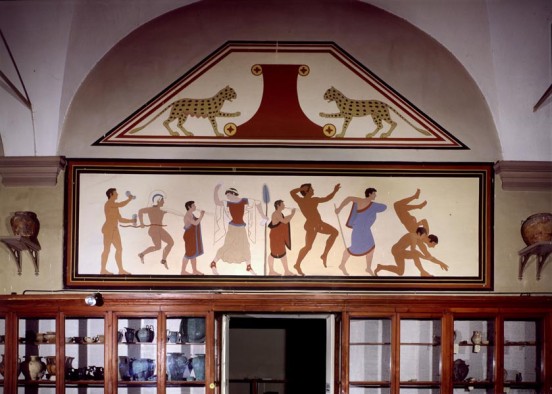- Read offline
- Access all content
- Use the in-app Map to find sites, and add custom locations (your hotel...)
- Build a list of your own favourites
- Search the contents with full-text search functionality
- ... and more!
Etruscans
Early Days

They don't teach you this in school, but most every art or talent we usually give the Romans credit for was bought or more likely stolen from somebody else. Roman painting, sculpture and architecture were seldom more than a grandiose pastiche of the Greek, and plenty of the other Roman trademarks – religion and superstition, gladiators, rectilinear surveying and town planning (for a good example, see the small Etruscan city of Kainua in Marzabotto's Parco Storico di Monte Sole), portrait sculpture, sewers, togas and even concrete – were simply taken over whole from Rome’s nearest neighbours and favourite victims, the Etruscans.
When Rome was still a collection of mud and timber huts among the miasmal swamps of the Tiber, the Etruscans were collecting Greek urns, reclining on couches at their lavish banquets and dressing up for the races. Their direct ancestors, according to current thinking, were the Villanovians, who were given that name after their culture was first discovered at a place called Villanova in Castenaso, 8km south east of Bologna (since then Villanovian artefacts have also been found as far away as Campania).
Images by Museo Archeologico, Sailko, GNU Free Documentation License

